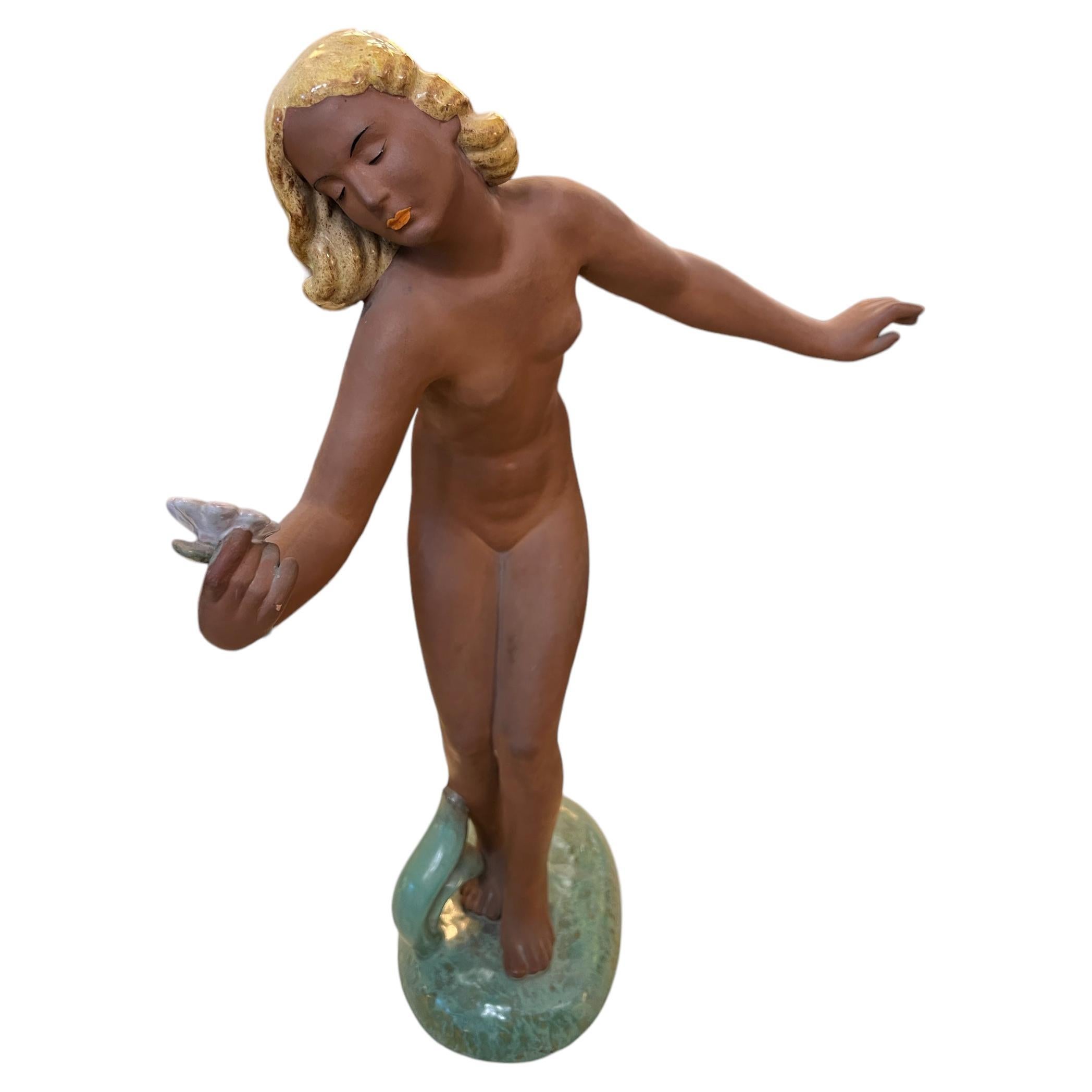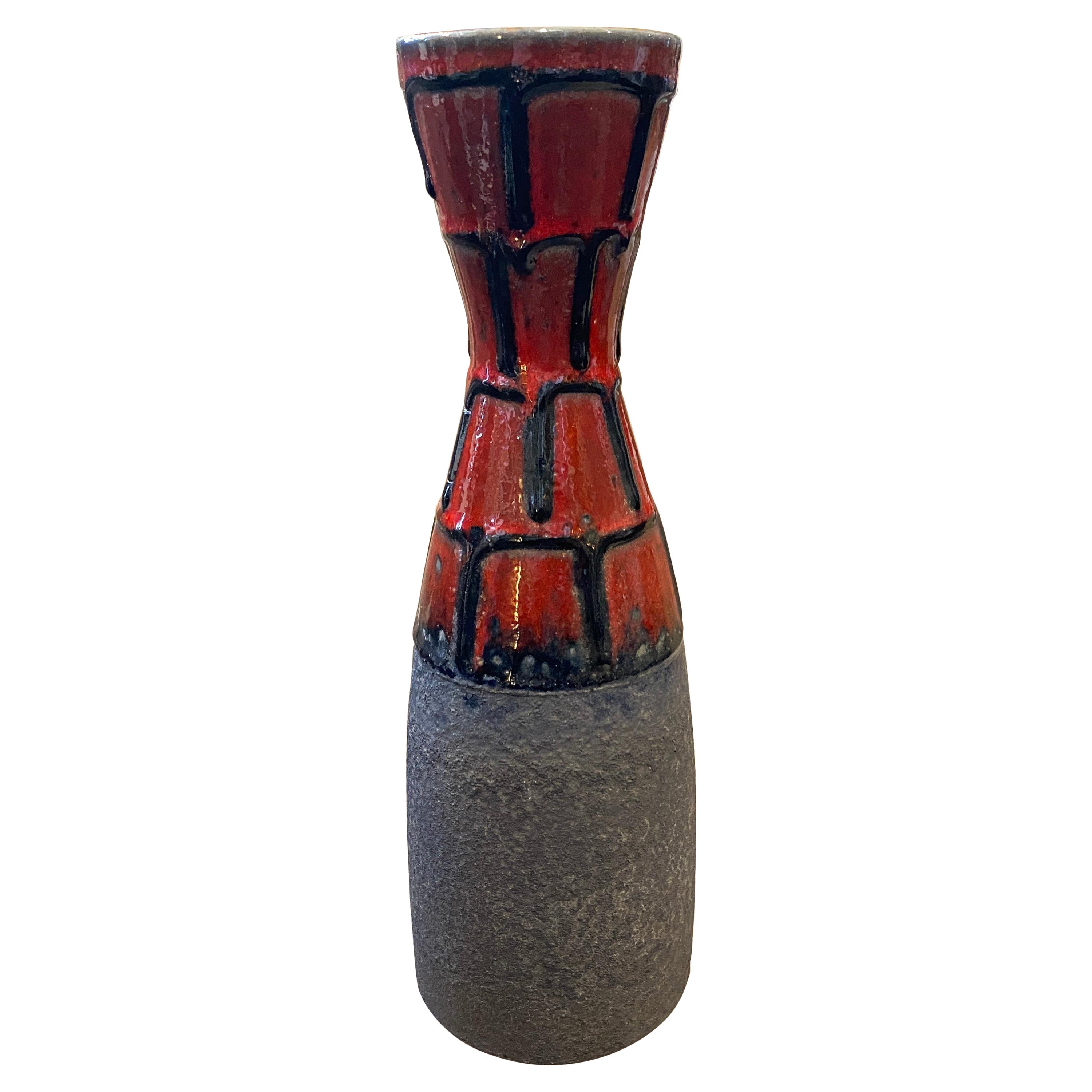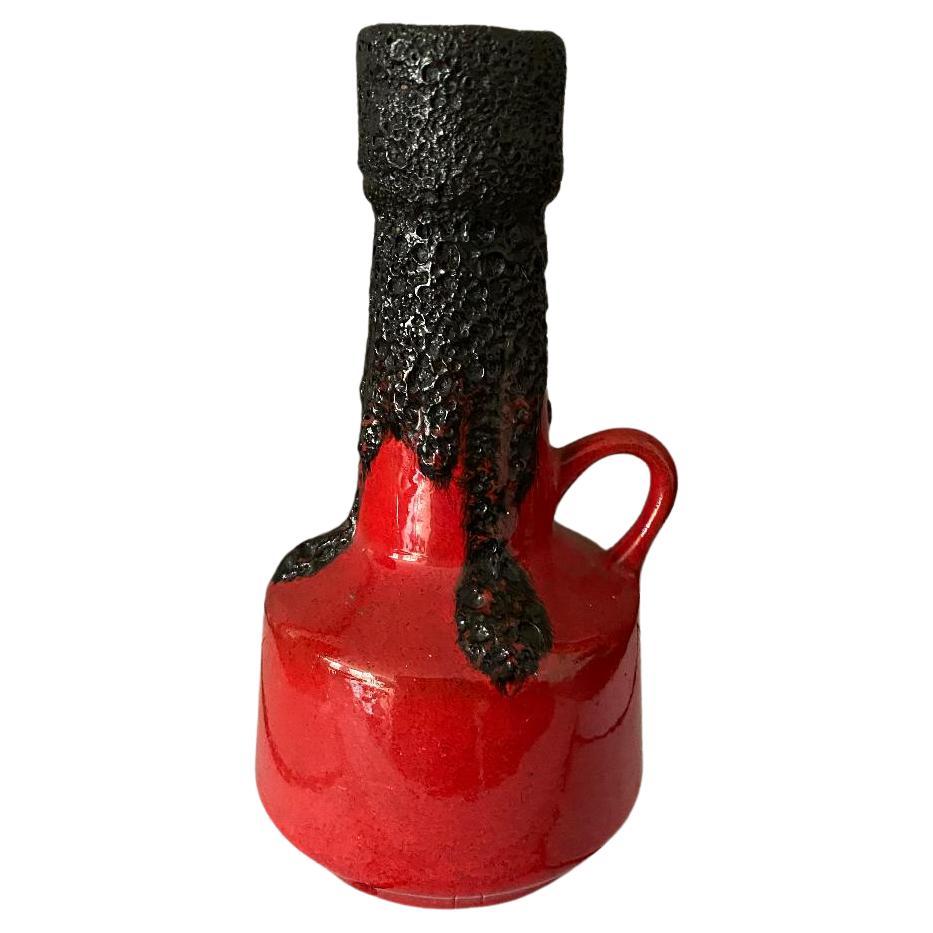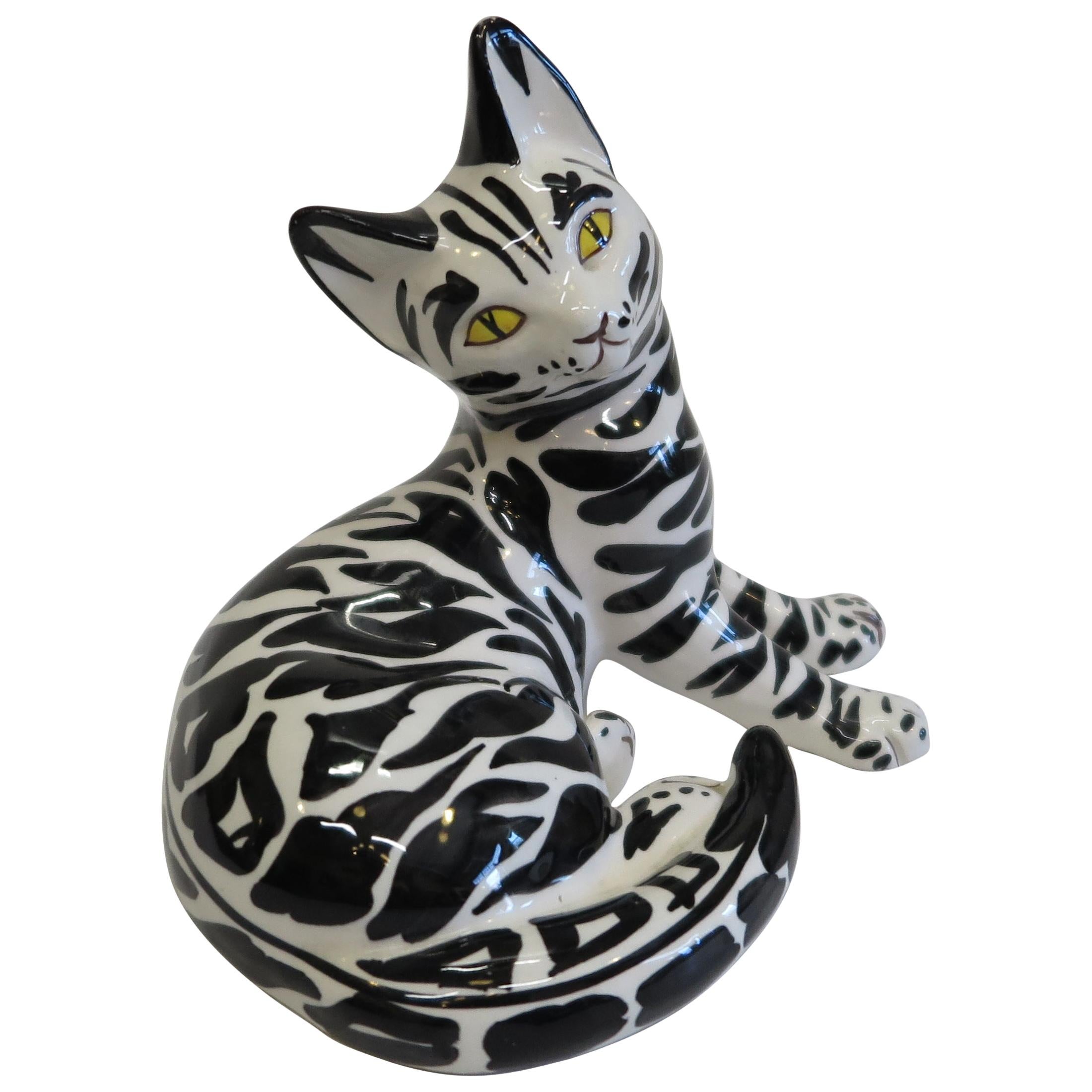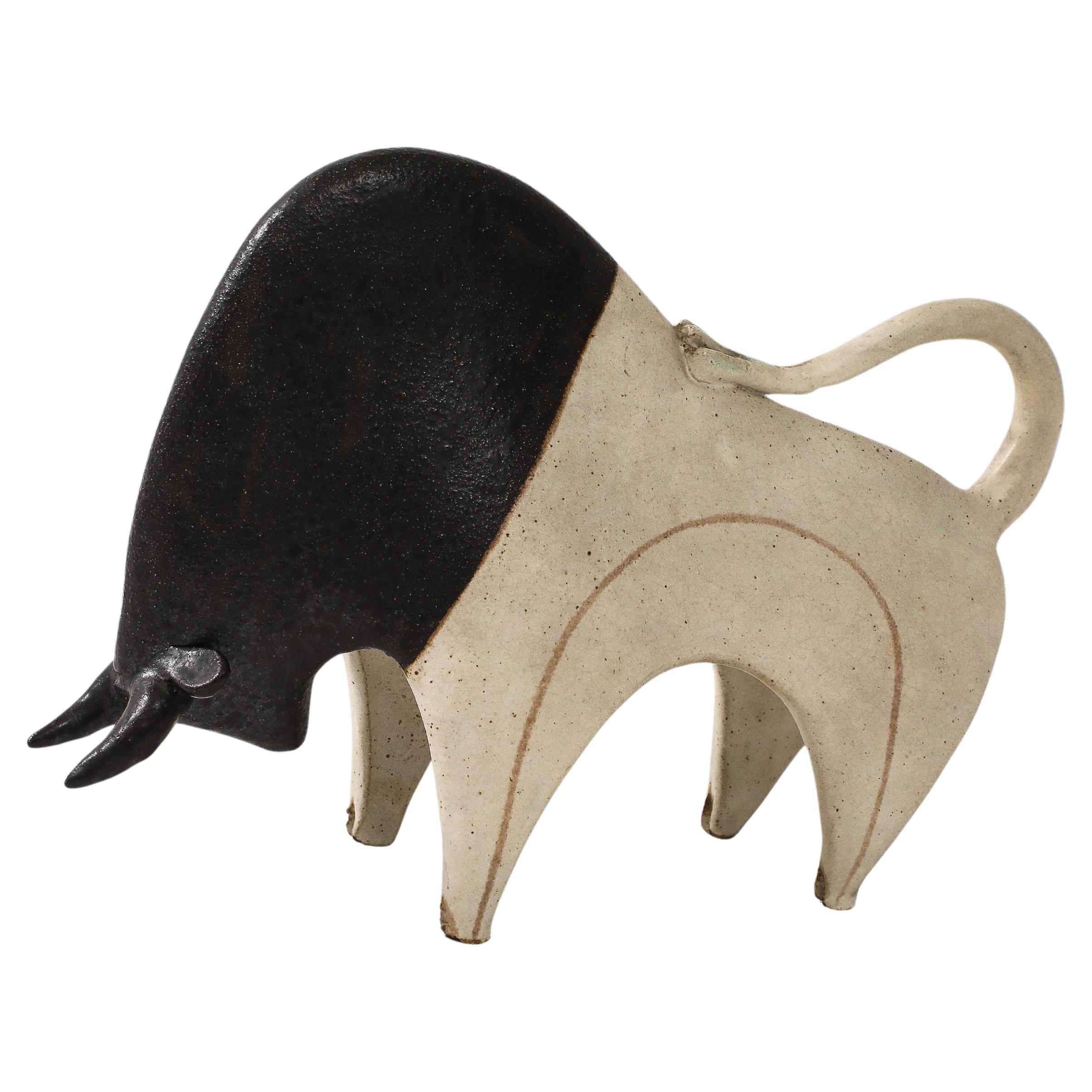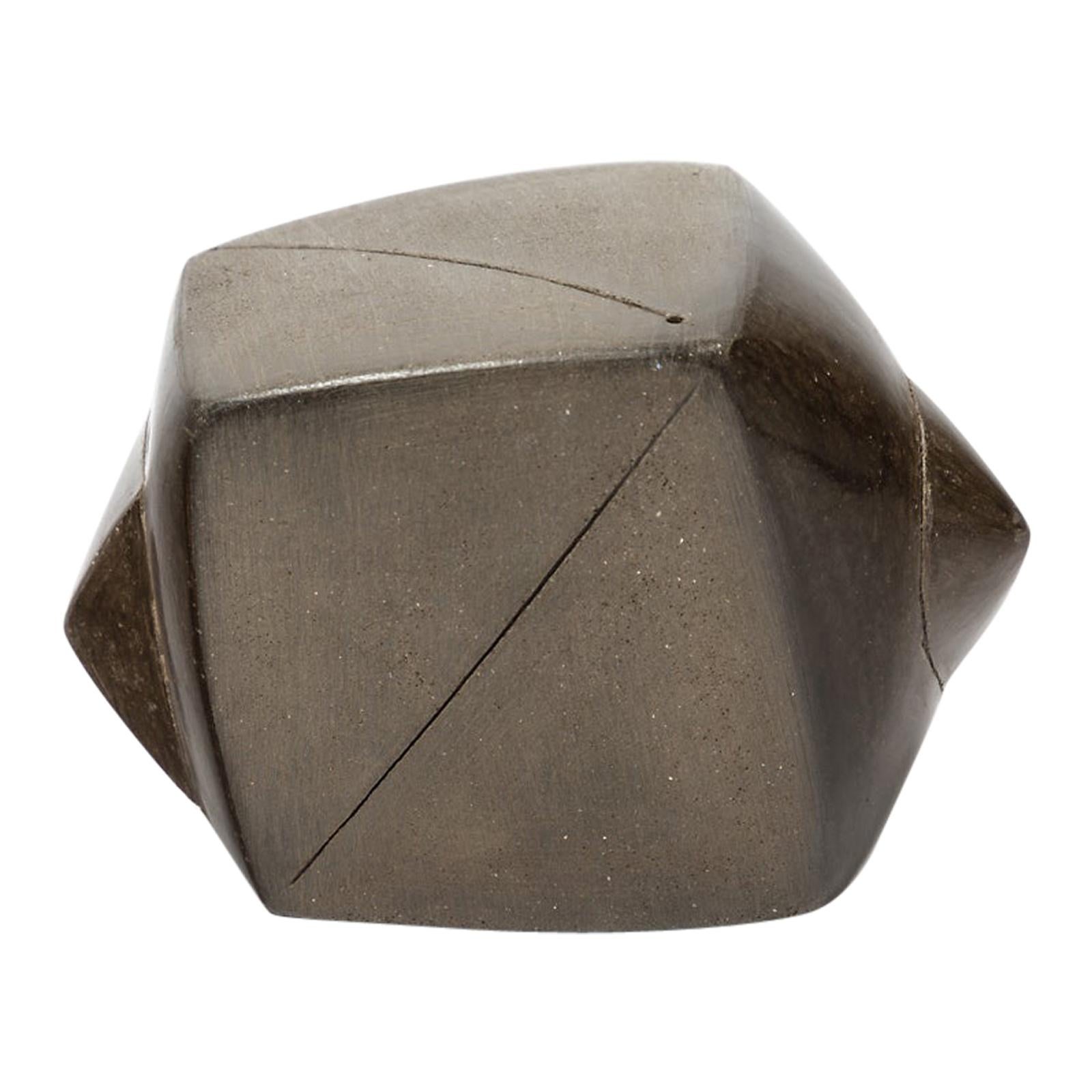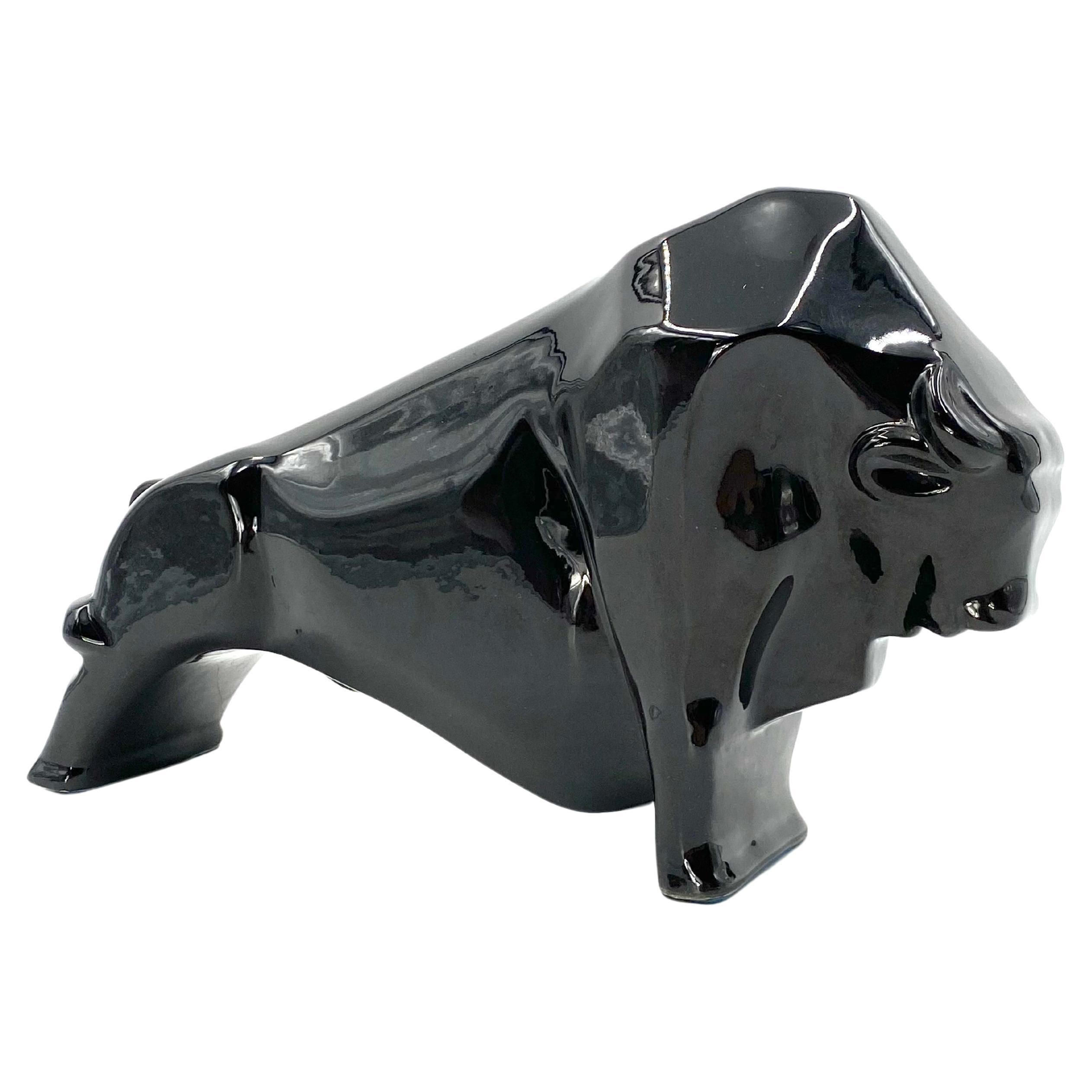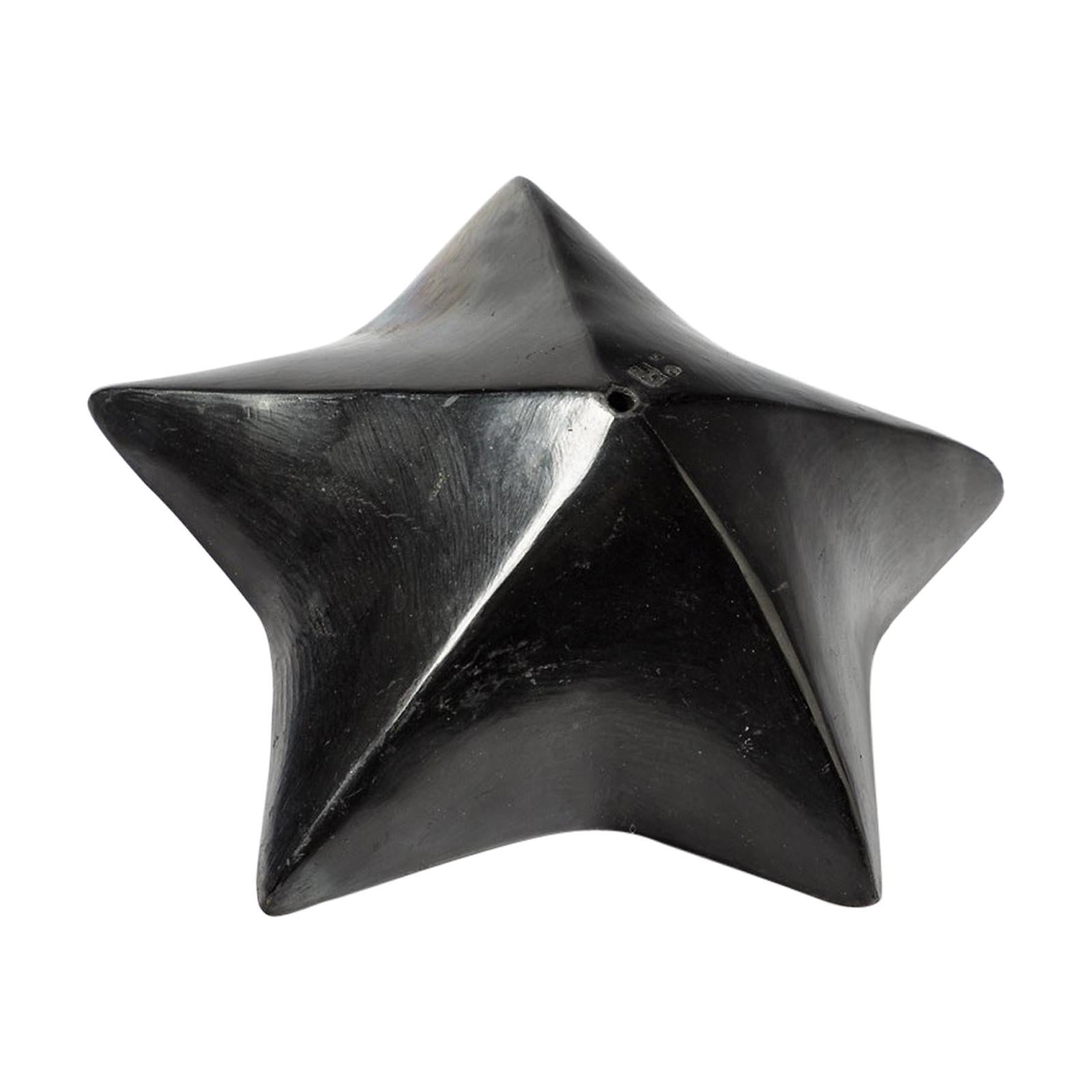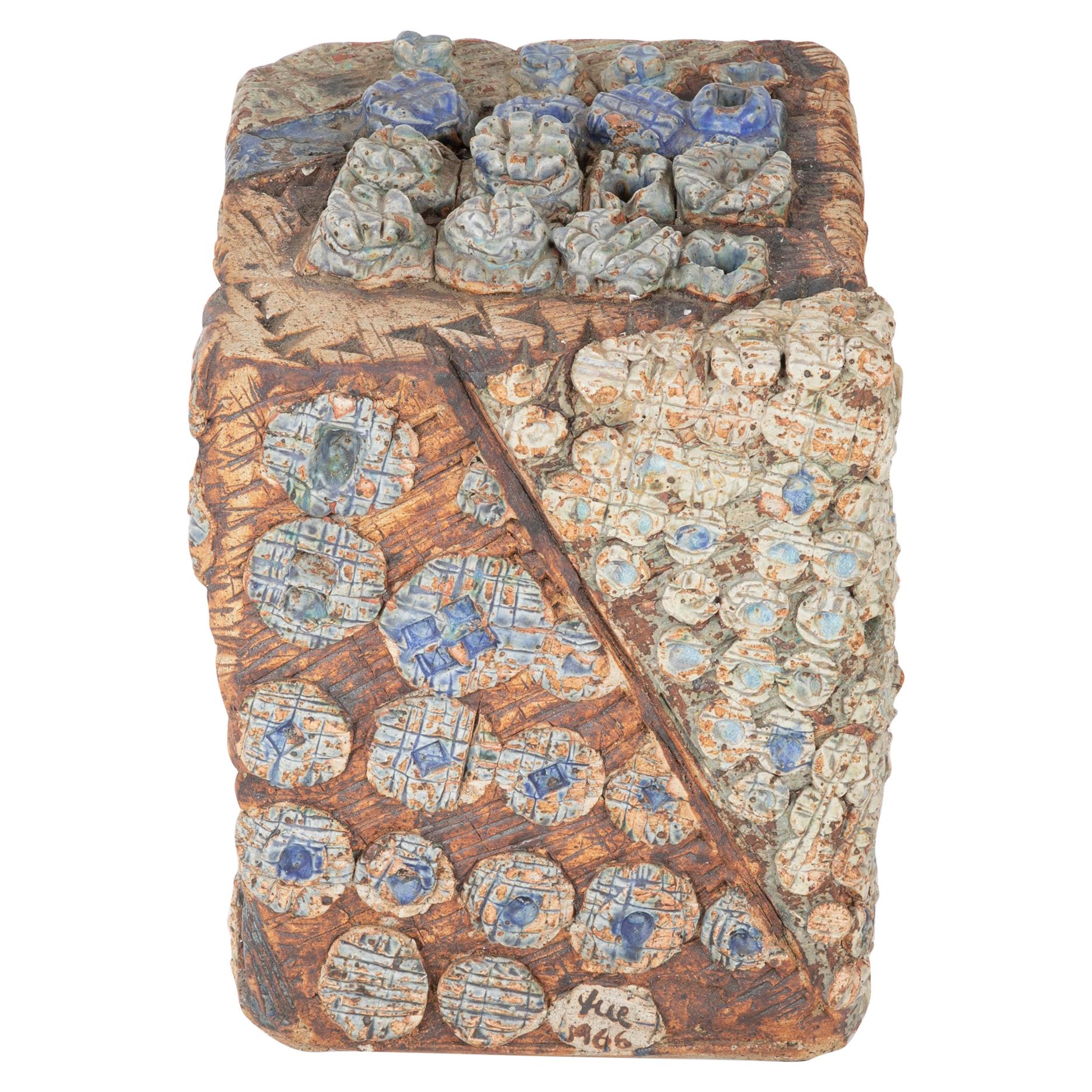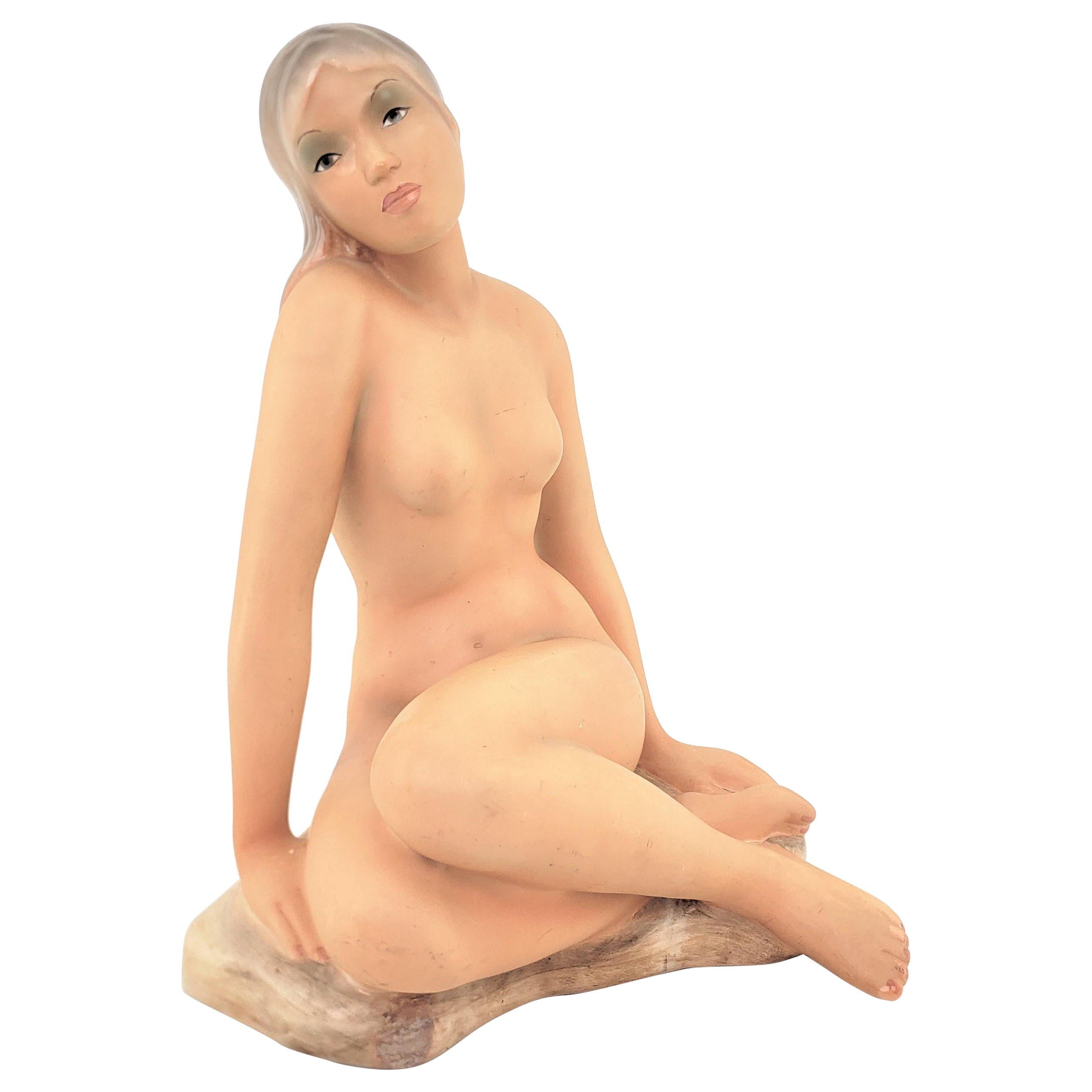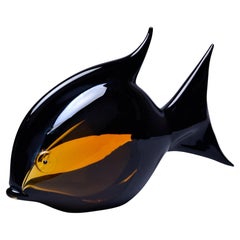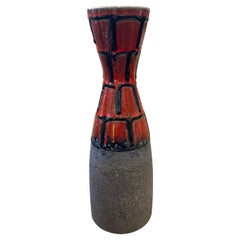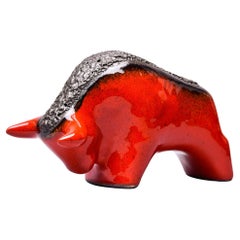
Mid Century Red and Black Lava Style Ceramic Bull
View Similar Items
Want more images or videos?
Request additional images or videos from the seller
1 of 11
Mid Century Red and Black Lava Style Ceramic Bull
About the Item
- Dimensions:Height: 5.25 in (13.34 cm)Width: 9.25 in (23.5 cm)Depth: 4 in (10.16 cm)
- Style:Mid-Century Modern (Of the Period)
- Materials and Techniques:
- Place of Origin:
- Period:
- Date of Manufacture:1970
- Condition:Wear consistent with age and use. very good vintage condition with no flaws found.
- Seller Location:Troy, MI
- Reference Number:Seller: 108561stDibs: LU899930952852
About the Seller
5.0
Platinum Seller
These expertly vetted sellers are 1stDibs' most experienced sellers and are rated highest by our customers.
Established in 1990
1stDibs seller since 2010
958 sales on 1stDibs
Typical response time: 1 hour
More From This SellerView All
- Tall Mid Century Multi Color Murano Glass FishLocated in Troy, MICirca 1980s Murano glass fish is over 14” tall. Glass is streaked with amber and blue tones and has applied lilac glass tail, mouth and eyes. Unknown Murano maker. No flaws or repair...Category
Mid-20th Century Italian Mid-Century Modern Animal Sculptures
MaterialsMurano Glass
- Black and Amber Murano Glass FishLocated in Troy, MIFound in Italy, this large Murano fish sculpture in black and amber glass dates from the 1990s. Excellent vintage condition with no flaws or repairs found. Two other fish in this col...Category
1990s Italian Mid-Century Modern Animal Sculptures
MaterialsMurano Glass
- Rina Menardi Royal Princess Vase in Poppy Red GlazeBy Rina MenardiLocated in Troy, MINew and made in Italy by Rina Menardi, this thin-walled vase stands over 12” high and has a pleasing shape. The ombre-style poppy red colored glaze has a contrasting dark washed inte...Category
2010s Italian Mid-Century Modern Vases
MaterialsCeramic
- Pair of Mid-Century Aluminium Winged Gull Wall Lights or SculpturesLocated in Troy, MIFound in Italy, this pair of circa 1970s cast aluminium seagulls can be used as wall sculptures or update the original electrical sockets for use as wall lights. Sold and priced as a...Category
Mid-20th Century Italian Mid-Century Modern Animal Sculptures
MaterialsAluminum
- Large Chinese Ceramic Tang HorseLocated in Troy, MICirca 2010 Chinese ceramic Tang horse stands just under 28” tall. Colorful glaze in rich shades of amber, green and cream. Unknown maker. Very good preowned condition with no flaws f...Category
2010s Chinese Tang Animal Sculptures
MaterialsCeramic
- French Green and Mustard Two Handle Vase with Narrow NeckLocated in Troy, MIFound in France, this French vase dates from approximately 1910. This piece stands 14.75” high and has a body with 8-1/4” diameter at the base and two shoulder form handles on the si...Category
Early 20th Century French French Provincial Vases
MaterialsCeramic
You May Also Like
- Ceramic Red and Black, Style, Art DecoLocated in Ciudad Autónoma Buenos Aires, CCeramic Sign: Made in Austria Keramos 2051 19/M Wiener Keramos, later Keramos AG or Keramos KG , was a Viennese ceramics manufacturer that made a name for itself especially in the interwar period . In addition to their own designs, designs from the dissolved Wiener Werkstätte were also produced from 1932 onwards. In over 60 years of company history, around 3000 model designs have been produced by around 60 ceramists. Keramos also carried out commissions from the Wiener Werkstätte, such as vases by Dagobert Peche . History The origins of the Keramos company lie in two companies with the same name. The company Keramos – Invalid Society for Viennese Art Ceramics was founded at the end of 1919 on the initiative of the three ceramists Rudolf Wolf, Heinrich Wolf and Ludwig Rys, who had become invalids in World War I. Production started in September 1920. Art-ceramic lamps, figures, vases and boxes were produced. The company Keramos – Viennese art ceramics and porcelain manufactory was founded in 1920. Josef Hoffmann was a shareholder of Keramos for a long time, as was the sculptor Rudolf Podany, who was engaged from the start and created a large number of designs. From 1921 Anton Klieber was employed, who was also responsible for most of the models. Around 1924 both companies were merged and converted into an AG, commercial director became Otto Köller, the technical directors were the brothers Rudolf and Heinrich Wolf. "Some war invalid ceramists founded a workshop with the help of some artists, which was subsequently financed by the state and later enlarged with its participation and converted into a joint-stock company." The company's headquarters were in the Hofburg , Schwarze-Adler-Stiege, the factory in the 10th district of Vienna, Schleiergasse 17. Artistic collaborators at that time were Eduard Klablena , Otto Prutscher , Karl Perl , Karin Jarl-Sakellarios , IDA Schwetz- Lehmann and Grete Fucik-Fischmeister. On February 23, 1928, the triangular mark was entered in the trademark register. It was now also produced for the Wiener Werkstätte. Difficulties for the company arose from the Great Depression . Around 1932, 50 people were employed and a large number of models from Eduard Klabena and the dissolved Wiener Werkstätte were taken over. The works created by Keramos were labeled with their company brands until after 1941. From 1939 the economic situation of the company was better managed by taking over the production of ceramic winter welfare organization badges, the so-called WHW badges. Before 1941 the company is converted into a KG named Keramos, Wiener Kunstkeramik und Porzellanmanufaktur Brüder Wolf KG . Otto Köller was no longer active from this point on. After the end of World War II, Robert Obsieger recommended Robert Mathis as the new head of Keramos, who took over the management of the ceramics manufactory in 1945. In 1949 Mathis introduced a new company logo, which was used alongside the existing triangle mark, the so-called coat of arms mark. Anton Klieber and Rudolf Podany continued to work as ceramists, and new artists such as Josef Lorenzl and Stephan Dakon , both of whom had previously worked for Goldscheider , as well as Rudolf Chocholka, Karl Grössl and Ina Eisenbeisser were engaged. New models such as dancers, children's figures, animals and nudes were created, as well as the well-known wall masks, young people and poodles from the mid-1950s, which corresponded to the trend at the time. In addition, however, traditional designs such as Madonna statues and busts, saints and angels were still made. Utility ceramics such as crockery, vases, lamp bases, candle holders and flower pots also became an important branch of production, and cooperation with the German manufacturer Carstens at the beginning of the 1960s was just as lucrative. In the course of the 1960s, the sales markets for figurative ceramics became increasingly difficult. So until 1982, production was increasingly shifted to everyday ceramics, since ceramic figures were no longer modern due to changing tastes and the spirit of the times. Ultimately, the economic situation at Keramos became more and more difficult and Klaus Mathis, the son of Robert Mathis and then director, who succeeded his father at the helm of the company at the beginning of the 1970s, initiated the liquidation of the company at the end of 1982 . Staff The following artistic collaborators have worked for Keramos over the years: Hans Adametz , Franz Barwig the Elder , Franz Barwig the Younger , Andreas Beck, Hans Bolek, Angelo Bortolotti, Hertha Bucher , Rudolf Chocholka, Stephan Dakon , Ferdinand Doblinger, Eckstein, Franz Eggenberger , Ina Eisenbeisser, English, Stephan Erdös, Alois Feichtinger, Feyslitz, Hans Friedberger, Grete Fucik-Fischmeister, Kurt Goebel, Anton Grath, Karl Grössl, M. Günther, Otto Hafenrichter, Arnold Hartig , Friedrich Herkner, Trude Hillinger, Leopold Hohl, Hostasch, Karl Jamök, Karin Jarl-Sakellarios , Eduard Klablena, Klar, Anton Klieber, Maria Klinger, Josef Kostial, Josef Lorenzl , Wilhelm Otto Lugerth, Viktor Matula, Gusty Mundt-Amman, Novotny, Carl Perl, Rudolf Podany, Friedrich Pollak, Hugo Postl, Adolf Prischl, Otto Prutscher , Max Rieder , Elisabeth Rieger-Hofmann, Walter Ritter , Willibald Russ, Karl Sailer, Schönberg, Schwarz, Ida Schwetz-Lehmann , Sult, Robert Ullmann , Otto Weigand, IDA Weiss-Moricz, Rudolf Wolf. Exhibitions • Jubilee exhibition of the Wiener Kunstgewerbeverein, Austrian Museum , Vienna 1924. • Arts and Crafts Exhibition, Paris, 1925. • Exhibition of Austrian arts and crafts...Category
Vintage 1930s Austrian Art Deco Figurative Sculptures
MaterialsCeramic
- 1970s Mid-Century Modern Red and Black Fat Lava Ceramic Vase by RothBy Roth KeramikLocated in Aci Castello, ITA red and black ceramic vase made in Germany in the Seventies by Roth Keramik. This kind of ceramic has been called Fat Lave KeramiK and it was very popular in Italy and Germany in t...Category
Mid-20th Century German Mid-Century Modern Vases
MaterialsCeramic
- Mid-Century Roth Fat Lava Black and Red VaseBy Roth KeramikLocated in Waddinxveen, ZHA Roth Keramik vase, with a matte bubbly 'lava' glaze thickly poured over a glossy red glaze. Measures: height: 20cm and depth: 10cm.Category
Vintage 1960s German Mid-Century Modern Vases
MaterialsCeramic
- Mid Century Italian Ceramic CatLocated in New York, NYItalian ceramic cat Raymor Pottery. Vintage Italian art cat figure hand painted Giorgio Gubbio for Raymor. In very good condition. No repairs, cr...Category
Vintage 1960s Italian Mid-Century Modern Animal Sculptures
MaterialsCeramic
- Bruno Gambone Glazed Ceramic Bull Sculpture, Italy, 1970sBy Bruno GamboneLocated in New York, NYBruno Gambone glazed ceramic or stoneware standing bull, Italy, 1970s. Signed on underside "GAMBONE ITALY". This graphic and sculptural bull is at once whimsical and austere and make...Category
1990s Italian Mid-Century Modern Ceramics
MaterialsCeramic, Stoneware
- Black Abstract Ceramic Sculpture by Nadia Pasquer Mid Century DesignBy Nadia PasquerLocated in Neuilly-en- sancerre, FRNadia Pasquer Black asbtract ceramic sculpture by the French artist Signed under the base Original perfect condition Realised circa 2000 Measures: Height: 7cm, large: ...Category
21st Century and Contemporary French Modern Abstract Sculptures
MaterialsCeramic
Recently Viewed
View AllMore Ways To Browse
Mid Century Ceramic Bull
Ceramic Bull Italy
Ceramic Red Bull
Vintage Ceramic Red Bull
Retro Ceramic Red Bull
Vintage Horse Head
Vanity Sculpture
Large Wood Eagle
Retro Bronze Lion
Large Dog Sculptures
Bronze Owl
Retro Wooden Birds
Garden Animal Antique
Cast Owl
Wooden Sculpture Handmade
Heron Design
Leopard Sculpture
Brass Mid Century Fish
